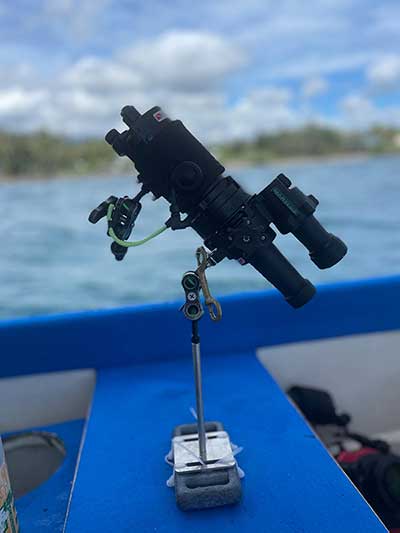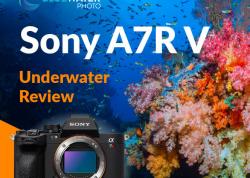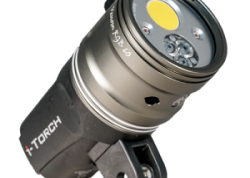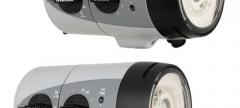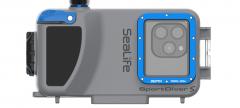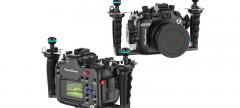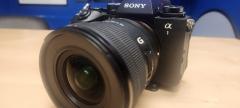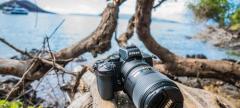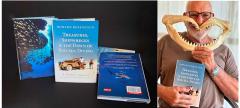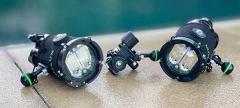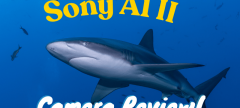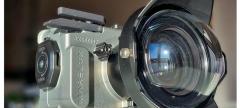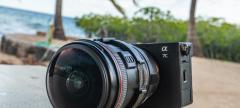The Marelux Apollo S Strobe Is a Game-Changer: 6 Months Underwater
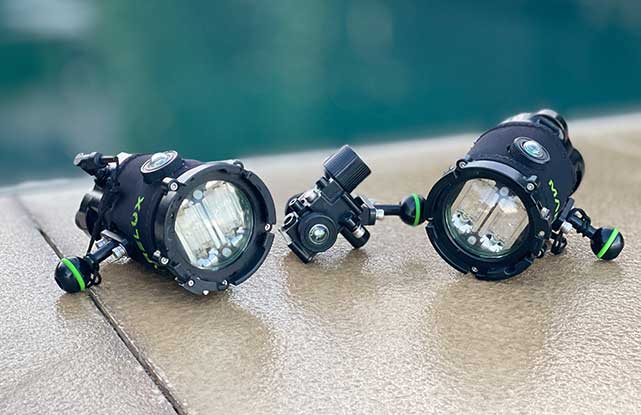
When you spend your life underwater searching for critters only a few millimeters wide, your lighting setup can be more important than the camera itself. My old INON D200s had started showing their limitations, especially in power and precision when paired with snoots for macro and super macro work.
As a Marelux Ambassador, upgrading my gear as soon as the new Apollo S strobes were released was a no-brainer.
The larger Apollo III strobes were too powerful and bulky for my needs, so I went with the Apollo S — a decision based on both logic and passion.
After six months of diving with the Apollo S strobes, here’s my full report.
Support our content and purchase your Marelux Apollo S and Lumilink 2.0 Wireless Transmitter at Bluewater Photo:
Recommended Batteries: Three 18650H batteries at Bluewater Photo
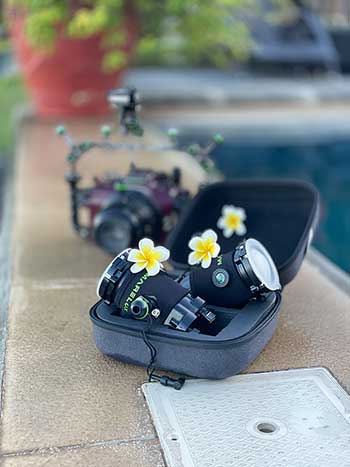
Unboxing & Accessories
I got my strobes the day before flying to Hanifaru, Maldives at the end of September (shoutout to Prestige Scuba for the speedy delivery!). First impressions were great — they arrived in the now-familiar compact square Marelux case, which is perfect for travel.
Inside the case, I found:
- Two ball mounts for attaching to arms
- Protective covers for the strobes and Lumilink receivers
- Two silicone diffusers
- Two docks for my Soft Pro snoots
- A set of color filters for creative shots
- Two protective sleeves
- The Lumilink transmitter
I started diving the very next day. The learning curve was minimal — the strobes are easy to use despite packing in a lot of features.
Design and Ergonomics
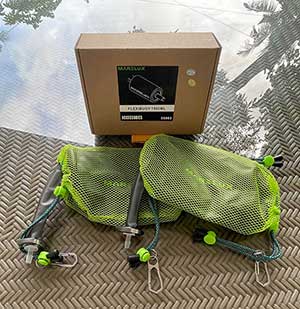
At first glance, the Apollo S stands out with its minimalist design and compact size — easy to forget underwater. It weighs 813g with two 18650 batteries installed (720g without). Underwater, it’s super manageable thanks to excellent buoyancy tuning: just 150g, or 50g with a float sleeve.
With Marelux Flexibuoys, I can fine-tune buoyancy based on whether I’m using snoots or just the strobes.
Construction is rock solid — anodized aluminum body, anti-corrosion coating, and a battery compartment sealed with double O-rings. Built to survive impacts, saltwater, and rough travel.
The two control knobs have great grip, even with gloves. The main knob switches between five modes (Test, Manual, TTL/RC, HSS, MTL) — confirmed by a quiet beep. With some practice, you can switch modes by counting the clicks. The second knob controls power across 12 levels, and an LED indicates battery status.
Modes I Actually Use (And Love)
The Apollo S offers five modes to suit every underwater photographer’s needs:
Test
Manual – My go-to for macro. Dial in the power precisely.
TTL/RC – Auto exposure when using a compatible trigger (I use the 11080-HSS from Underwater Technics). RC is for Olympus cameras (I didn’t test this).
HSS – High-speed sync up to 1/8000s. Great for freezing motion without shutter speed limitations.
MTL – Burst mode up to 10 frames per second via cable — perfect for nailing the perfect shot.
MTL deserves special attention. I’d never used the Canon R5’s high-speed burst mode before — my INON strobes simply couldn’t keep up. But the Apollo S handles it effortlessly. In MTL mode via fiber optic cable, it supports 10 continuous flashes per second at any power level.
Wireless MTL mode works too, but depending on the power setting, you might miss a few shots.

Battery Life
Each strobe runs on two high-capacity 18650 batteries (≥20A discharge). Marelux says they last up to 800 full-power flashes. In real use — especially macro, which rarely requires full power — I can get through two full days of diving (about six dives) before recharging. That’s excellent.
Marelux recommends recharging once the indicator turns purple (roughly 80% depleted), especially when using MTL.
Beam Angles
- 110° standard beam underwater
- 120° with the flat silicone diffuser
- 140° with the dome diffuser
- 85° beam when using the snoot dock — my personal favorite
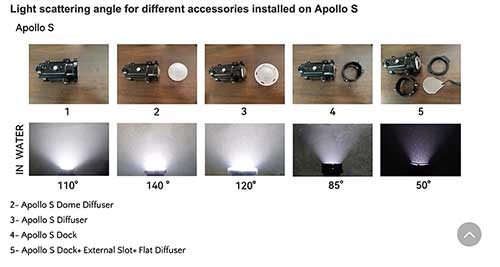
Field Testing: Real Dives, Real Results
Here’s where I’ve taken the Apollo S over the past six months:
Maldives (Sept–Oct): Used TTL mode for balanced lighting — great for large subjects like mantas and sharks.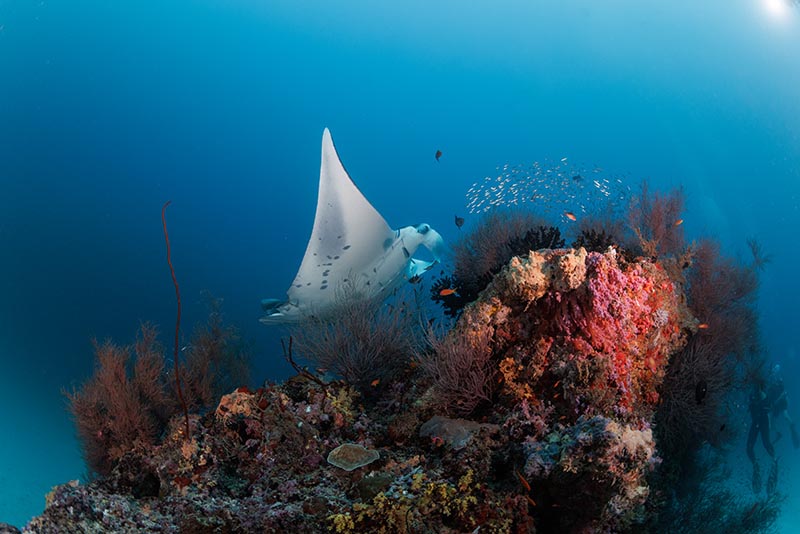
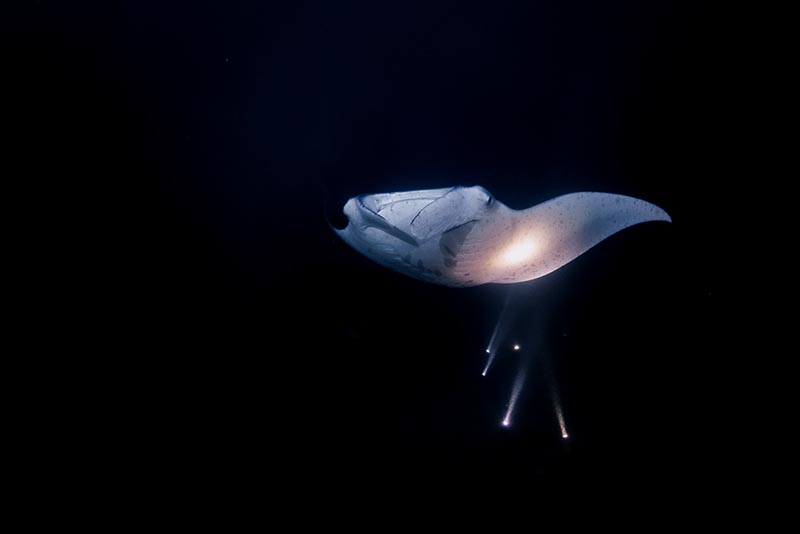
Even at night in tough conditions.
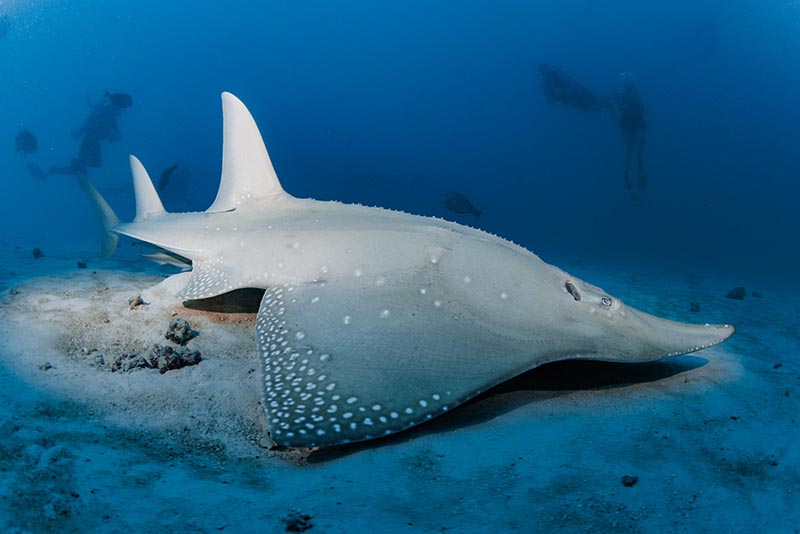
Or this guitar shark.
Tulamben (Oct–Dec): Manual mode + Soft Pro snoot — super precise lighting on ghost shrimp, trapani, and nudibranchs.


This tiny Trapani

And this fantastic purpel Eubranchus.
Romblon (Nov): The super macro capital. Apollo S nailed it — from tiny hairy shrimp to snooted Cyerce Nigra.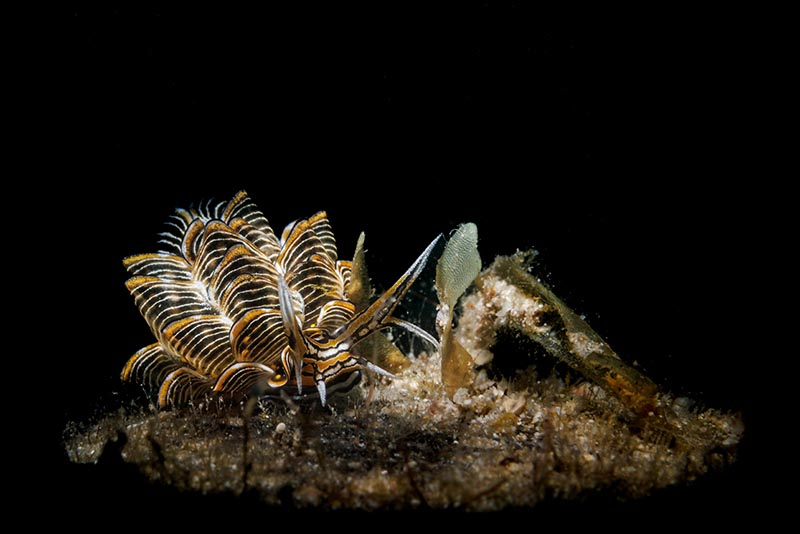
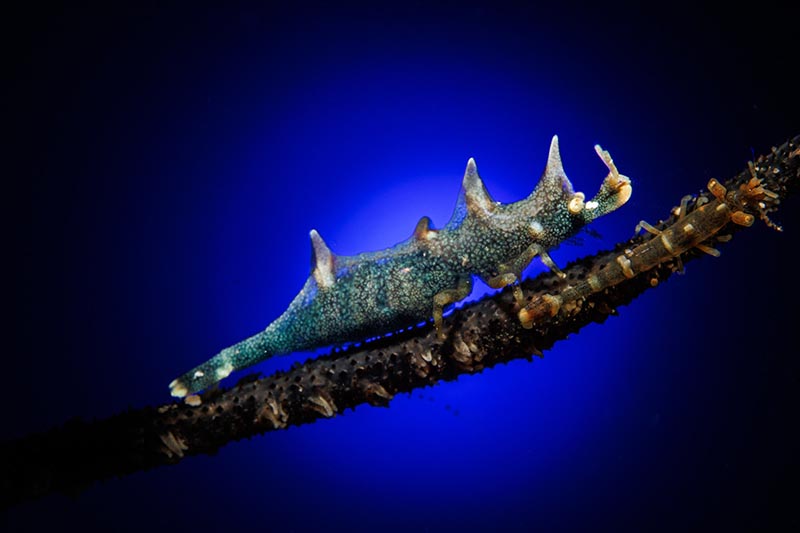
Anilao (Jan): In competition settings, TTL and snooted manual shots held up — fast burst on a cardinalfish with eggs, backlit seahorses, and Xeno crabs.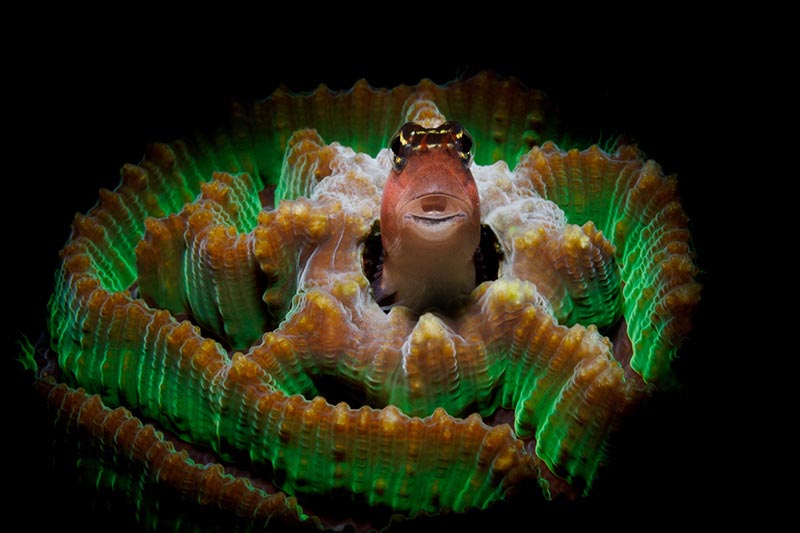

Dauin (Feb–Apr): Creative color filter work — solo snooting a frogfish and goby, dual-snoot setups using the Mini-Stand.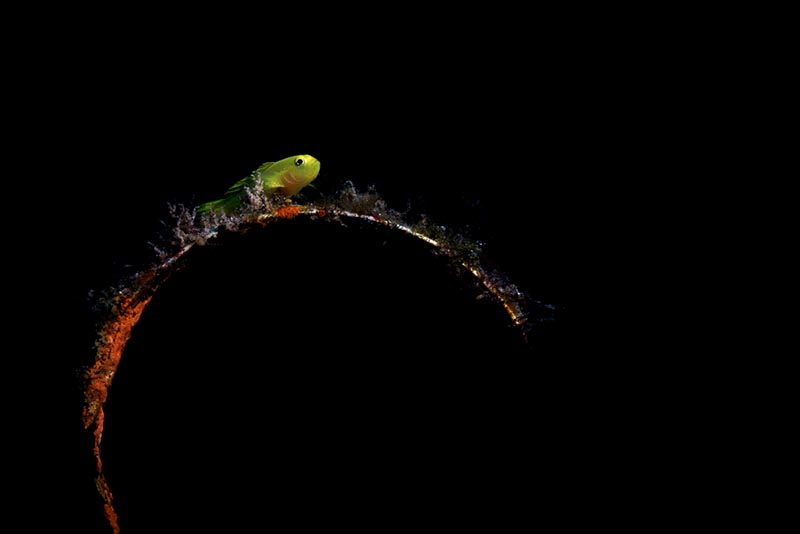
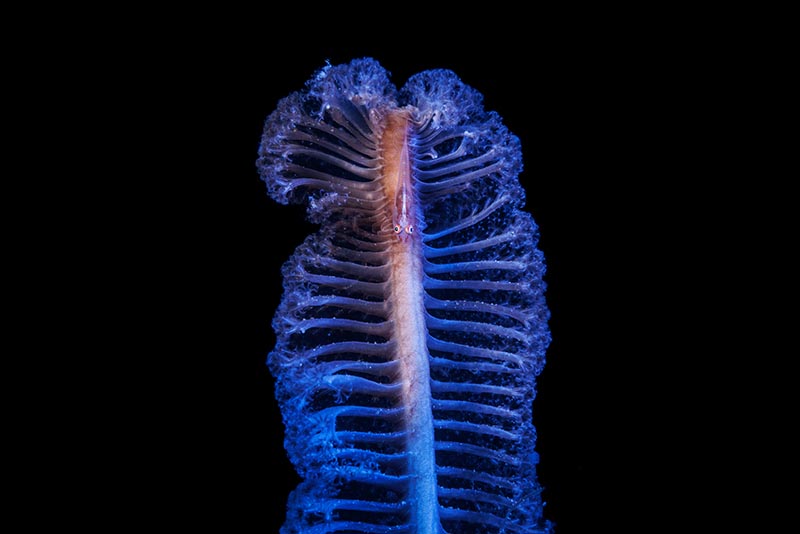
This strobe lets me get creative without compromise.
Cordless Freedom: Lumilink

The Lumilink transmitter is Marelux’s wireless signal tech. It reads the trigger signal in your housing, amplifies it, and sends an encrypted optical signal (LED) to receivers on the strobes.
Syncs up to 1/200s
Range: 2m at the surface in sunlight, 10m+ in deeper water
Encrypted and resistant to interference
Only downside: Wireless MTL may drop a few flashes at high power
Accessories That Make a Big Difference
- Soft diffusers and domes – for soft or wide light
- Color filters for Marelux SOFT – for in-camera creative effects
- Marelux SOFT Lite – my favorite light-shaping tool
- Mini-Stand – enables creative dual-snoot setups
Final Verdict: Why I Recommend the Apollo S
Smooth, controllable power, even with snoots
-
Soft, natural light output
-
Reliable wireless triggering with Lumilink
-
Versatile shooting modes
-
MTL = secret weapon for peak moments
-
Tough, lightweight, travel-friendly build
Bottom line: The Apollo S isn’t just a strobe. It’s a seamless extension of my creative underwater workflow.
Marelux Apollo S Specifications
- Maximum Guide Number 36 (on land)
- 0.9 second recycle time at full power
- Beam angle of 110 degrees (120 degrees with normal diffusers, and 140 degrees with dome diffusers)
- Support for TTL, RC, HSS, MTL, wireless triggering (The TTL, HSS, and RC modes require compatible flash triggers)
- Strobe has 2 fisheye wireless signal sensor units - sensor coverage is 160 °
- Full power flash: around 800 times
- Wireless trigger supports M, MTL, HSS. (TTL, RC needs fiber)
- Temp 6200k
- With dome diffuser, scattering angle 120-140 °, Temp 5500k
- Fiber optic trigger port
- Batteries: 2x 18650H batteries
- Max diameter 70mm, length of main body 140mm, full length including knobs 160mm
- Weight on land: 720 grams (without battery, with ball mount), 813 grams with 2x18650 batteries (with ball mount)
- Weight in water: 150 grams (including 2x18650 batteries, including ball mount). The weight after putting on the buoyancy suit is 50 grams
- Waterproof Depth : 100m
- US MSRP: $849
RECOMMENDED ARTICLES
SUPPORT THE UNDERWATER PHOTOGRAPHY GUIDE:
The Best Service & Prices on u/w Photo Gear
 Visit Bluewater Photo & Video for all your underwater photography and video gear. Click, or call the team at (310) 633-5052 for expert advice!
Visit Bluewater Photo & Video for all your underwater photography and video gear. Click, or call the team at (310) 633-5052 for expert advice!
The Best Pricing, Service & Expert Advice to Book your Dive Trips
 Bluewater Travel is your full-service scuba travel agency. Let our expert advisers plan and book your next dive vacation. Run by divers, for divers.
Bluewater Travel is your full-service scuba travel agency. Let our expert advisers plan and book your next dive vacation. Run by divers, for divers.




